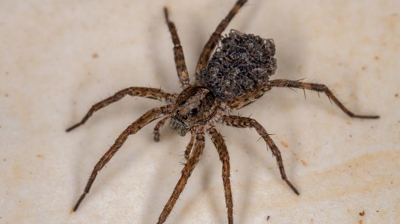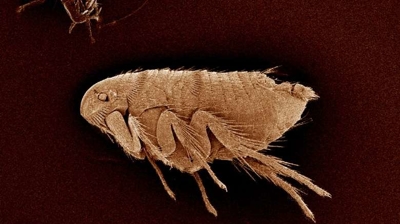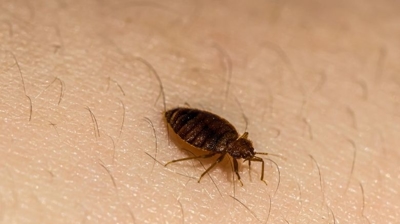
Blacklegged Tick Control Services

Are Blacklegged Ticks Harmful?
Blacklegged ticks (Ixodes scapularis) are considered harmful primarily due to their role as vectors for several serious diseases that can affect both humans and animals. Their harmfulness arises not from the tick bite itself—which is typically painless and may go unnoticed—but from the pathogens they transmit. Here are some of the ways in which blacklegged ticks are considered harmful:
Transmission of Lyme Disease
Blacklegged ticks are the primary vectors of Borrelia burgdorferi, the bacterium that causes Lyme disease—the most common tick-borne illness in North America. Lyme disease can lead to a wide range of symptoms, including:
- Early symptoms: Fever, headache, fatigue, and a characteristic skin rash known as erythema migrans (bull's-eye rash).
- Later stages: Untreated Lyme disease can cause severe joint pain (Lyme arthritis), neurological problems (such as facial palsy, meningitis, or neuropathy), and heart rhythm irregularities (Lyme carditis).
Carrier of Other Tick-Borne Diseases
In addition to Lyme disease, blacklegged ticks can carry and transmit several other serious pathogens, sometimes concurrently (coinfections), compounding the severity of illness:
- Anaplasmosis (Anaplasma phagocytophilum): Causes flu-like symptoms, with possible complications such as respiratory failure or bleeding issues.
- Babesiosis (Babesia microti): A malaria-like parasitic infection that can be life-threatening, especially in the elderly or immunocompromised.
- Powassan Virus: A rare but potentially fatal viral infection that can cause encephalitis or meningitis, with long-term neurological effects.
- Borrelia miyamotoi: Another form of relapsing fever that can present similarly to Lyme but often without the characteristic rash.
- Ehrlichiosis (less commonly associated with blacklegged ticks but possible in overlapping ranges).
Stealthy Feeding Behavior Increases Risk
Blacklegged ticks are small (especially in nymph and larval stages) and often go unnoticed due to:
- Painless bites and secretion of anesthetic in their saliva.
- Ability to remain attached for several days while feeding.
- Preference for moist, shaded environments where human and animal contact is likely (e.g., leaf litter, grassy trails).
This stealthy feeding behavior increases the likelihood of prolonged attachment, which is critical because disease transmission (especially of Borrelia burgdorferi) typically requires the tick to be attached for 24–48 hours or longer.
Impact on Pets and Livestock
Blacklegged ticks can also infect dogs, horses, and other animals. In pets, Lyme disease can cause:
- Fever, lethargy, and lameness
- Kidney failure in severe cases
- Long-term joint and mobility issues
These conditions not only affect animal welfare but also incur significant veterinary costs and emotional distress for pet owners.
Blacklegged Tick Control
Hiring our professional pest control for blacklegged ticks (also called deer ticks) is highly recommended because these ticks pose significant health risks and are notoriously difficult to control on your own:
- Health Risks: Blacklegged ticks are vectors for serious diseases, including Lyme disease, the most common tick-borne illness in the U.S., causing fatigue, joint pain, and neurological problems if untreated, Anaplasmosis, a bacterial infection that can cause fever, headache, and muscle pain, Babesiosis, a malaria-like illness that can be severe for people with weakened immune systems, and Powassan virus, a rare but potentially deadly, transmitted quickly by tick bites. Because of these risks, minimizing tick populations around your home is crucial for you, your family, and pets.
- Expert Knowledge and Identification: Our professionals can accurately identify blacklegged ticks, distinguishing them from other species that may not carry diseases. We understand the tick life cycle, which is key to targeting the most vulnerable stages (larvae, nymphs, adults) for effective control.
- Targeted Treatments: Our professional pest control technicians use EPA-approved products that are both safe and effective, applied in the right areas and at the correct time of year. We target tick habitats, including tall grass, leaf litter, shrubs, and wooded areas, which are difficult to treat effectively without proper equipment and knowledge.
- Integrated Tick Management: Our professionals use an integrated approach that combines chemical control (pesticides applied strategically) and habitat modification (removing leaf litter, trimming brush, creating buffer zones). This multifaceted approach dramatically reduces tick populations more effectively than DIY methods.
- Ongoing Prevention and Monitoring: Ticks reproduce rapidly and can reinfest areas, so regular professional monitoring helps prevent outbreaks. Our experts provide advice on landscaping modifications and pet protection, further reducing the risk of bites.
- Safety: Handling tick control chemicals improperly can be hazardous. Our professionals are trained to apply treatments safely for humans, pets, and the environment.
Blacklegged ticks are small but dangerous pests. DIY methods often fail to fully eliminate them because their eggs and larvae hide in microhabitats around your property. Our professional pest control ensures effective, safe, and ongoing protection, reducing your risk of tick-borne illnesses significantly.
What Do Blacklegged Ticks Look Like?
Blacklegged ticks (Ixodes scapularis in the eastern United States and Ixodes pacificus in the western United States) have distinct physical characteristics that can help in their identification. Here is a description of what blacklegged ticks look like:
- Size and Shape: Blacklegged ticks are relatively small compared to other tick species. Adult females typically measure between 3 to 5 mm in length, while adult males are slightly smaller. Their body has an oval shape and is somewhat flattened.
- Coloration: The most distinguishing feature of blacklegged ticks is their black legs. These ticks get their common name "blacklegged" from this feature. The rest of their body is a reddish-brown color.
- Mouthparts: Blacklegged ticks have specialized mouthparts that they use to pierce the skin of their host and feed on their blood. The mouthparts include a pair of barbed palps and a hypostome, which allows them to firmly anchor to the host during feeding.
- Number of Legs: Blacklegged ticks, like all arachnids, have eight legs in their adult stage. In the larval and nymphal stages, they have six legs.
- Life Stages: The ticks go through four life stages: egg, larva, nymph, and adult. The larval and nymphal stages have a more translucent appearance and are smaller, making them harder to spot than the larger, more noticeable adult ticks.
- Feeding Behavior: While feeding on a host, their bodies become engorged with blood, causing them to swell and become more visible.
- Gender Differences: Adult male blacklegged ticks are generally smaller and have a more slender appearance compared to the larger, blood-engorged adult females. Adult males often have more of the characteristic black coloring on their legs.
Identifying blacklegged ticks is important because they are known to transmit diseases such as Lyme disease, making awareness and proper tick removal essential for individuals who spend time in tick-prone areas. Their unique combination of reddish-brown bodies and black legs is a key feature to recognize them.
Where Are Blacklegged Ticks Found?
Blacklegged ticks, also known as deer ticks (Ixodes scapularis in the eastern United States and Ixodes pacificus in the western United States), are typically found in specific types of habitats that provide the necessary conditions for their survival. Here is a description of the habitats where you are likely to encounter blacklegged ticks:
- Wooded Areas: Blacklegged ticks are commonly found in forests and wooded regions. They prefer habitats with a dense canopy of trees and shrubs, which offer them protection from desiccation (drying out) and help maintain the humidity they require.
- Grassy Fields: Ticks are often found in fields and grassy meadows. They can be present in areas with tall grasses, as this vegetation provides suitable cover for them and makes it easier to latch onto passing hosts.
- Brushy Environments: Areas with dense undergrowth, shrubs, and low vegetation provide ideal hiding spots for blacklegged ticks. They often quest for hosts by climbing onto these plants and waiting for animals or humans to pass by.
- Peri-Urban and Suburban Settings: Blacklegged ticks can also be found in suburban or peri-urban areas, especially where properties back onto wooded areas or have abundant vegetation. Ticks may migrate from the natural environment into these areas, increasing the risk of human exposure.
- Coastal Regions: In some regions, particularly in the northeastern United States, blacklegged ticks are prevalent in coastal areas with a mix of woods, tall grasses, and saltmarshes.
- Trail Systems: Hiking and nature trails that pass through wooded or grassy areas can be prime locations for encountering blacklegged ticks, especially during the warmer months when these ticks are most active.
- Wildlife Habitats: Ticks may also be found in areas where deer and other host animals are abundant, as these animals serve as a source of blood meals for the ticks.
The presence of blacklegged ticks can vary by geographic region and local environmental conditions. They are most active during the spring, summer, and early fall when temperatures and humidity levels are conducive to their survival. When spending time in these types of habitats, individuals should take precautions, such as wearing appropriate clothing, using tick repellents, and conducting thorough tick checks after outdoor activities, to reduce the risk of tick bites and tick-borne diseases, like Lyme disease.
What Do Blacklegged Ticks Eat?
Blacklegged ticks, also known as deer ticks (Ixodes scapularis in the eastern United States and Ixodes pacificus in the western United States), have specific feeding habits at different stages of their life cycle. What these ticks eat varies with their life stage:
- Larval Stage: Larval blacklegged ticks have six legs and typically feed on the blood of small mammals and birds. During this stage, they attach to a host, feed for a few days, and then drop off. Larvae do not carry or transmit diseases as they are not infected at this point.
- Nymphal Stage: Nymphs, which have eight legs, are slightly larger than larvae and are also blood-feeding parasites. They usually target a wider range of hosts, which can include rodents, birds, and larger mammals. Nymphs are more likely to acquire and transmit diseases, such as Lyme disease, as they feed.
- Adult Stage: Both adult males and females are blood-feeding parasites during their final stage. Adult ticks typically target larger mammalian hosts, such as deer, but they can also feed on other large mammals, including humans. Female blacklegged ticks require a blood meal to lay their eggs. After feeding, they become engorged and drop off to lay eggs. Adult ticks are the primary source of disease transmission to humans and other animals. If an adult tick is infected with a disease-causing pathogen, it can transmit the infection to the host during the feeding process.
The primary function of the blood meal in the tick life cycle is to provide essential nutrients for growth, development, and reproduction. The feeding behavior of blacklegged ticks plays a crucial role in their ability to acquire and transmit pathogens responsible for diseases like Lyme disease, anaplasmosis, and babesiosis. Therefore, reducing exposure to ticks and taking precautions when spending time in tick-prone areas can help mitigate the risk of tick bites and associated diseases.
Blacklegged Tick Life Cycle
The life cycle of blacklegged ticks (Ixodes scapularis in the eastern United States and Ixodes pacificus in the western United States), commonly known as deer ticks, involves four distinct stages: egg, larva, nymph, and adult. Here is the life cycle of blacklegged ticks:
- Egg Stage: The life cycle begins when an adult female tick lays eggs. Female ticks typically lay several thousand eggs at a time, usually in a sheltered area within their habitat. The eggs are relatively small, measuring around 0.5 mm in size. After laying the eggs, the female typically dies.
- Larval Stage: When the eggs hatch, the larvae emerge. Larvae have six legs and are very tiny, usually measuring less than 1 mm in size. During this stage, the larvae are not infected with any diseases. They seek their first blood meal by attaching themselves to a host, which can be a small mammal or bird. After feeding, the larvae drop off the host and molt into the nymphal stage.
- Nymphal Stage: Nymphs have eight legs and are larger than the larvae but still relatively small, measuring around 1-2 mm in size. Nymphs are typically active during the spring and early summer. At this stage, they seek a second blood meal, often from a larger host, which can be a small mammal or bird. If the nymph feeds on an infected host, it can acquire pathogens like the bacterium Borrelia burgdorferi, which causes Lyme disease.
- Adult Stage: Nymphs molt into the adult stage. Adult females are larger than adult males. Adult males are more slender and measure around 2-3 mm in length, while adult females, after a blood meal, can reach 3-5 mm in length. Adult ticks are most active during the late fall and early spring. Both male and female adults require a blood meal. Female ticks, after feeding, become engorged and can lay thousands of eggs before dying.
The entire life cycle can take one to two years to complete, depending on environmental conditions and the availability of hosts. Blacklegged ticks are most concerning during the nymphal and adult stages, as they are more likely to transmit diseases to humans and animals. Preventative measures, such as tick checks and protective clothing, are essential during periods of tick activity to reduce the risk of tick bites and tick-borne diseases.

Hear From Our Happy Customers
-
"Great Communication"
Tech was on time, communication was great, and he accommodated my needs.
- Alonzo W. -
"Professional & Considerate"
I’m pleased with Miche services. Jarvis came today. Professional and considerate. Thank you!
- Judy B. -
"Wonderful Service"
Wonderful service. Jarvis is great. Took care of everything I needed. Thank you!
- Henry P. -
"Exceeds Expectations"
I can’t say enough positive things about this company... The tech that came out, Jarvis went above and beyond my expectations. Thank you guys, I will continue using your services.
- Jake M. -
"Fantastic & Patient"
Jarvis was fantastic and patient. He answered my questions with an in-depth explanation and addressed all of my areas of concern. Would love for him to be my assigned tech going forward. Well done!
- Yonnette M. -
"Very Knowledgeable"
The tech that arrived was courteous, professional, and very knowledgeable. He was Great.
- Uerial I.



